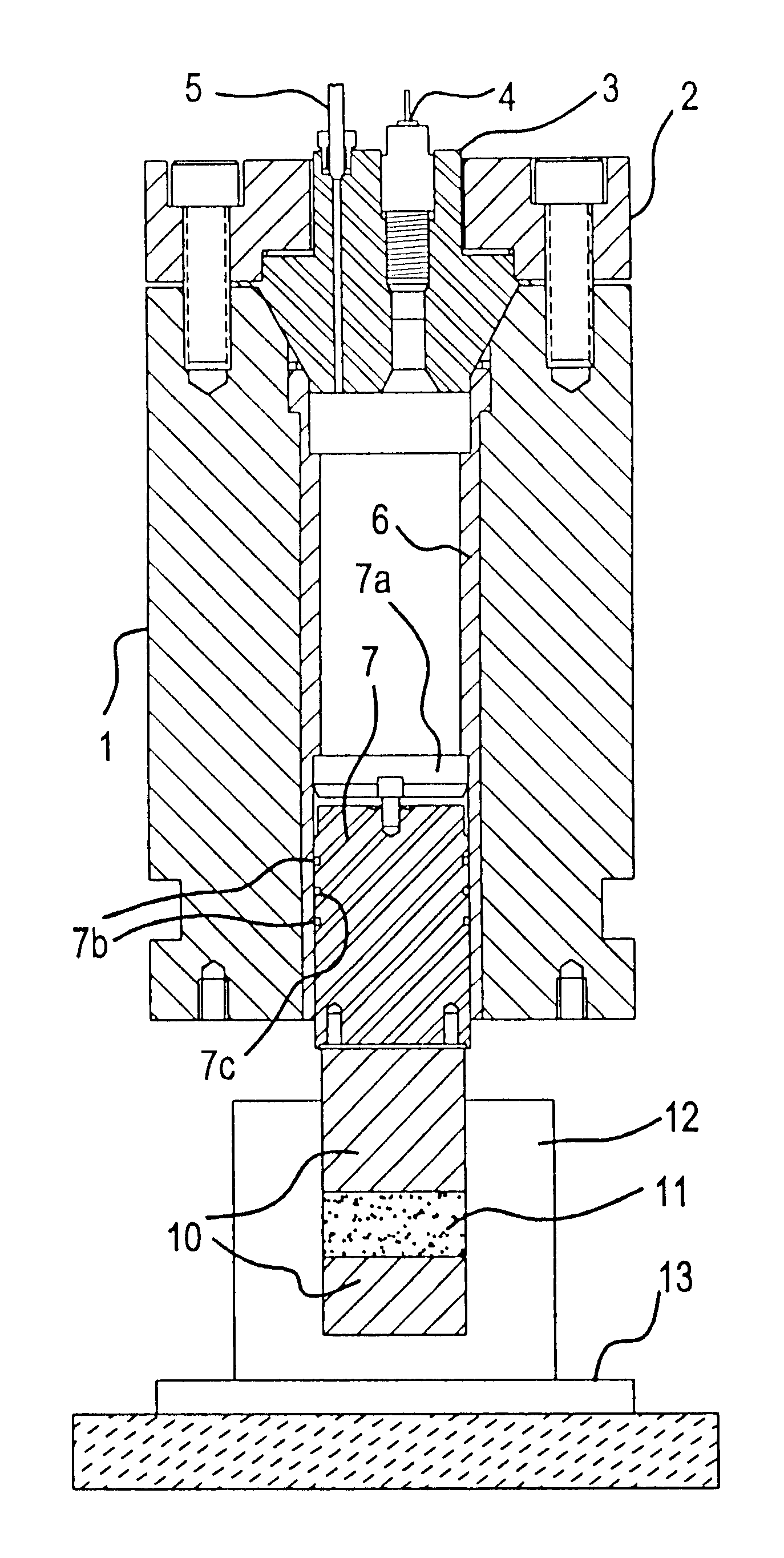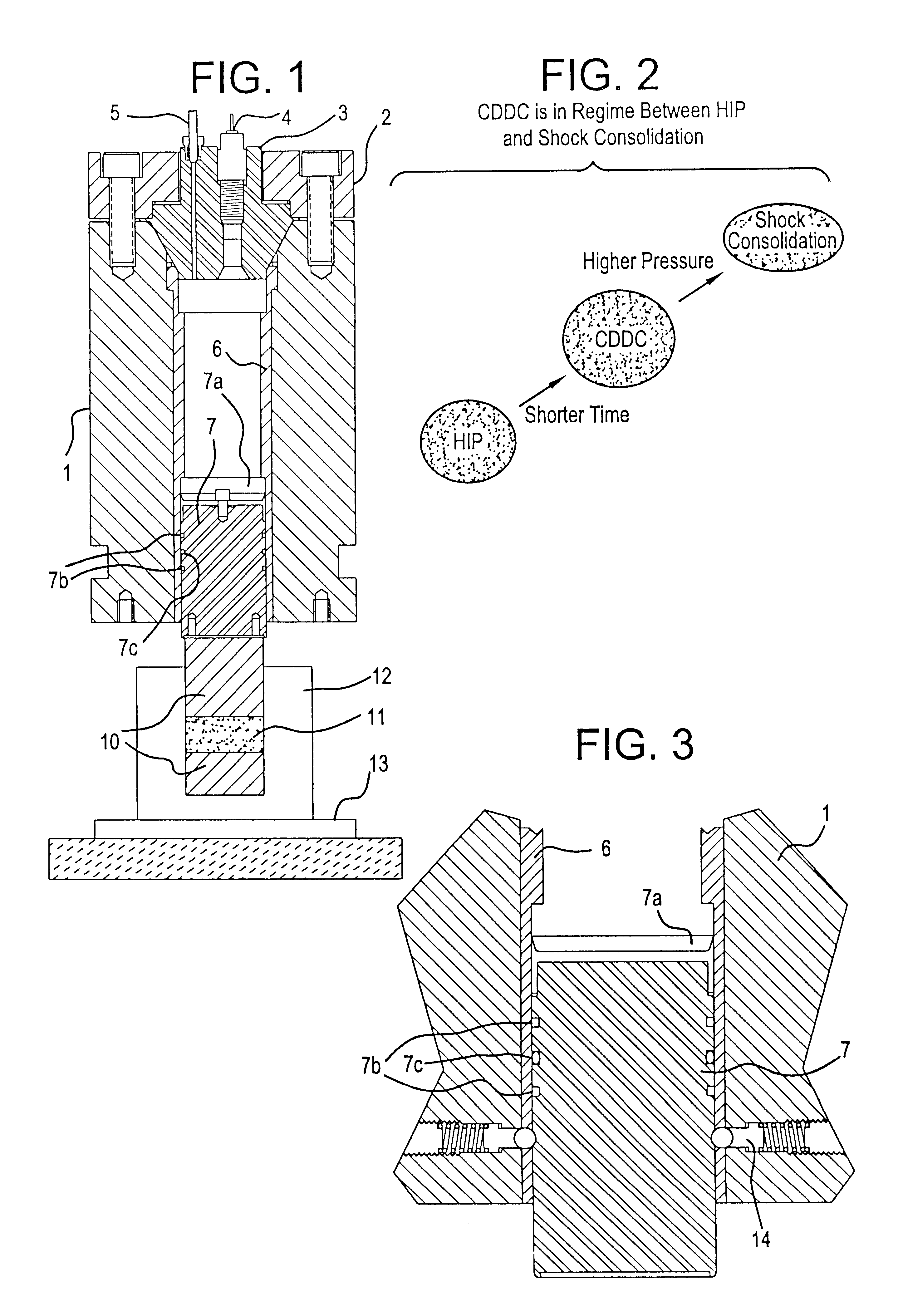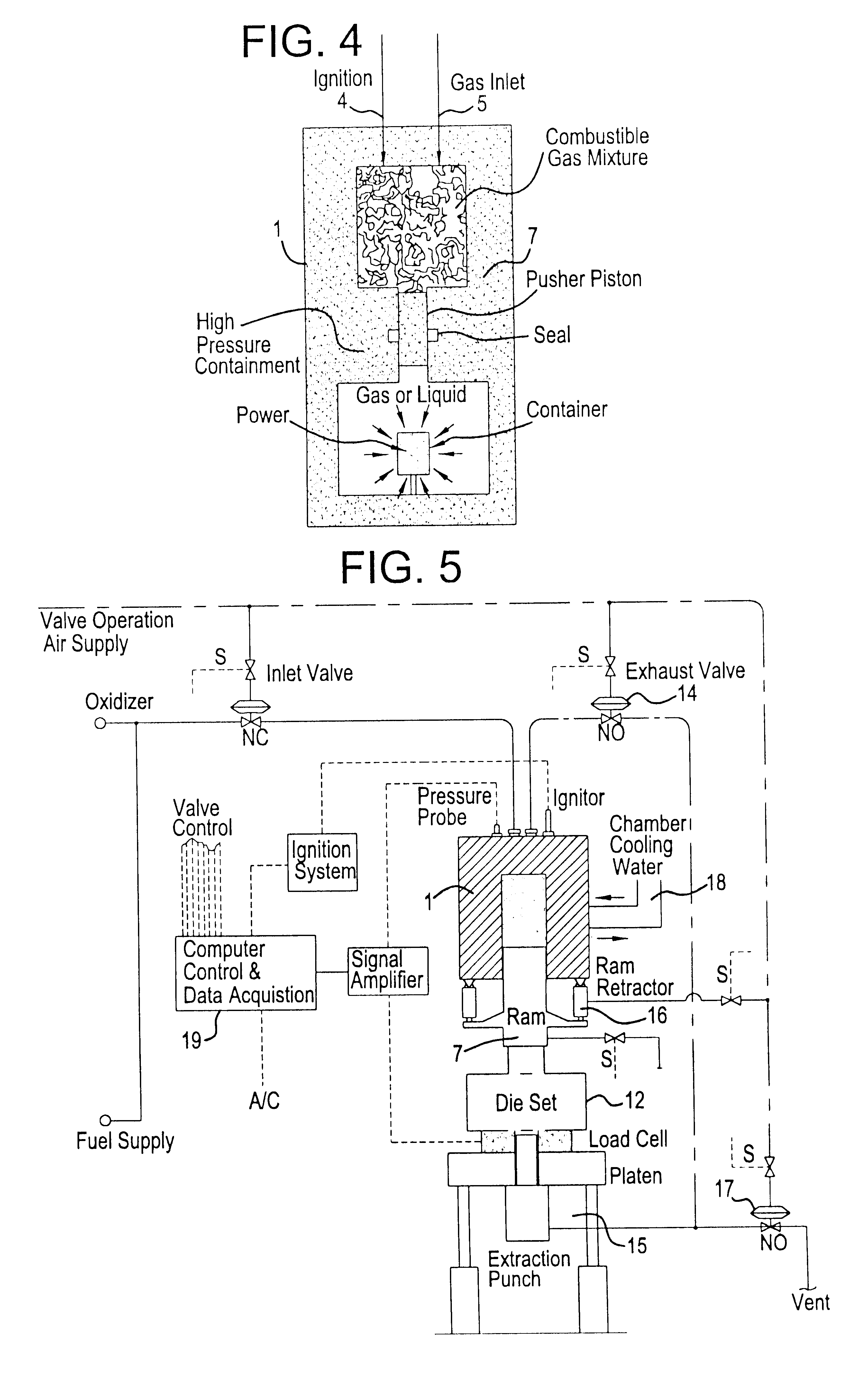Dynamic consolidation of powders using a pulsed energy source
- Summary
- Abstract
- Description
- Claims
- Application Information
AI Technical Summary
Benefits of technology
Problems solved by technology
Method used
Image
Examples
example 2-- 30
Example 2--30 Ton Press
Testing in the second CDDC prototype, shown in FIG. 19, revealed the CDDC process to be both robust and versatile at compacting various types of powder materials. This larger CDDC device applied up to 300,000 pounds per square inch (150 tons per square inch) to one-half inch outer diameter, 5 / 8 inch inner diameter, ring shaped compacts of various materials, as shown in Table 3. FIG. 20a shows the same device with a volume filler to change the volume of the combustible gas. FIGS. 20b, c and d show additional detail of the compaction chamber, seals, ignitor, and pressure sensor. FIG. 21 shows photographs of two views of the hardware.
Typical ring compacts are shown in FIGS. 22 and 23. The compaction chamber configuration and the ring die set are shown in FIG. 24. Typical combustion and compaction pressures along with densities and mechanical properties for stainless steel powders compacted by the enhanced CDDC press are shown in FIG. 25. Properties for one of the...
example 3-- 300
Example 3--300 Ton Press
A third and larger prototype CDDC press further shows the versatility and performance capability of CDDC presses and technology. The internal details of this press were shown previously in FIG. 1. Externally the press looks as shown in FIGS. 29a and 30a, b, and c. Shown there also is the steel framework which supports the compaction unit above the die table. To the left is the cabinet containing the gas pumping system.
This 300-ton press has compacted standard Metal Powder Industries Federation (MPIF) standard 10 tensile test bars of various materials at pressures exceeding 300,000 pounds per square inch (150 tons per square inch). A typical test bar of 1 square inch surface is shown in two views in FIG. 31.
As seen in FIG. 1 the 300-ton CDDC press is mounted in the more traditional vertical orientation and uses standardized die sets placed under the press on the incorporated table. The sealing system for the ram has also been substantially improved as shown in...
example 4-- 3000
Example 4--3000 Ton Press
A dynamic compaction press design capable of delivering 3000 tons is shown in FIG. 29B in proper scale to the 300-ton press shown in FIG. 29A. Note that this press, although large relative to the previous examples, is still much smaller than conventional mechanical or hydraulic presses of this capacity. For example a conventional 3000-ton press may stand 30 feet tall and have a footprint of 400 square feet while a 3000-ton CDDC press would be about 10 feet tall and 100 square feet respectively. Combustion driven compaction devices are by nature relatively compact as the necessary energy is directly converted from the chemical state. It is expected that even larger output presses using the CDDC process are both feasible and relatively compact. It is also expected that such presses will be inexpensive relative to conventional presses.
Pressure Profile Control
In all embodiments of the invention, diaphragms, fast valves and adjustable diameter exhaust ports or or...
PUM
| Property | Measurement | Unit |
|---|---|---|
| Pressure | aaaaa | aaaaa |
| Temperature | aaaaa | aaaaa |
| Temperature | aaaaa | aaaaa |
Abstract
Description
Claims
Application Information
 Login to View More
Login to View More - R&D
- Intellectual Property
- Life Sciences
- Materials
- Tech Scout
- Unparalleled Data Quality
- Higher Quality Content
- 60% Fewer Hallucinations
Browse by: Latest US Patents, China's latest patents, Technical Efficacy Thesaurus, Application Domain, Technology Topic, Popular Technical Reports.
© 2025 PatSnap. All rights reserved.Legal|Privacy policy|Modern Slavery Act Transparency Statement|Sitemap|About US| Contact US: help@patsnap.com



